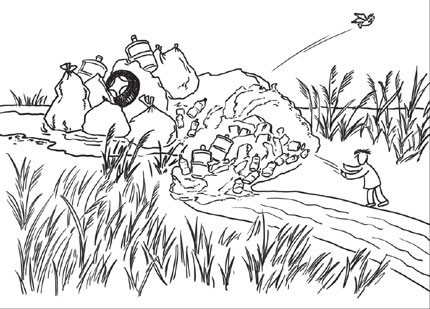
 |
| Illustrated by Shanghai Daily |
Plastics are everywhere.
Whether used to store leftovers, keep hospital equipment sterile, or insulate a home, plastics are unmatched for their adaptability, durability, and low cost.
Given their boundless benefits, it is unsurprising that plastics have replaced traditional materials in many sectors - for example, steel in cars, paper and glass in packaging, and wood in furniture.
As a result, annual plastics consumption worldwide has increased from five million tons in the 1950s to around 280 million tons today.
Roughly half of plastic products, such as packaging, are intended for one-time, short-lifespan (less than six months) applications prior to disposal.
Given that most of these items are not biodegradable, and are not recycled, plastics waste is building up - with serious environmental consequences.
While governments have begun to implement new (and often quite strict) regulations aimed at managing plastics waste - for example, China banned lightweight plastic shopping bags in 2008 - they are inadequate to address the world's growing plastics-waste problem.
Moreover, most plastic products are made from so-called "petroleum-based commodity thermoplastics."
Non-renewable resource
Given that a non-renewable resource forms the basis of many plastic products - most of which will not last long - current plastics usage patterns are not sustainable.

















 What house can you buy with 1 million yuan in China?
What house can you buy with 1 million yuan in China?


![]()
